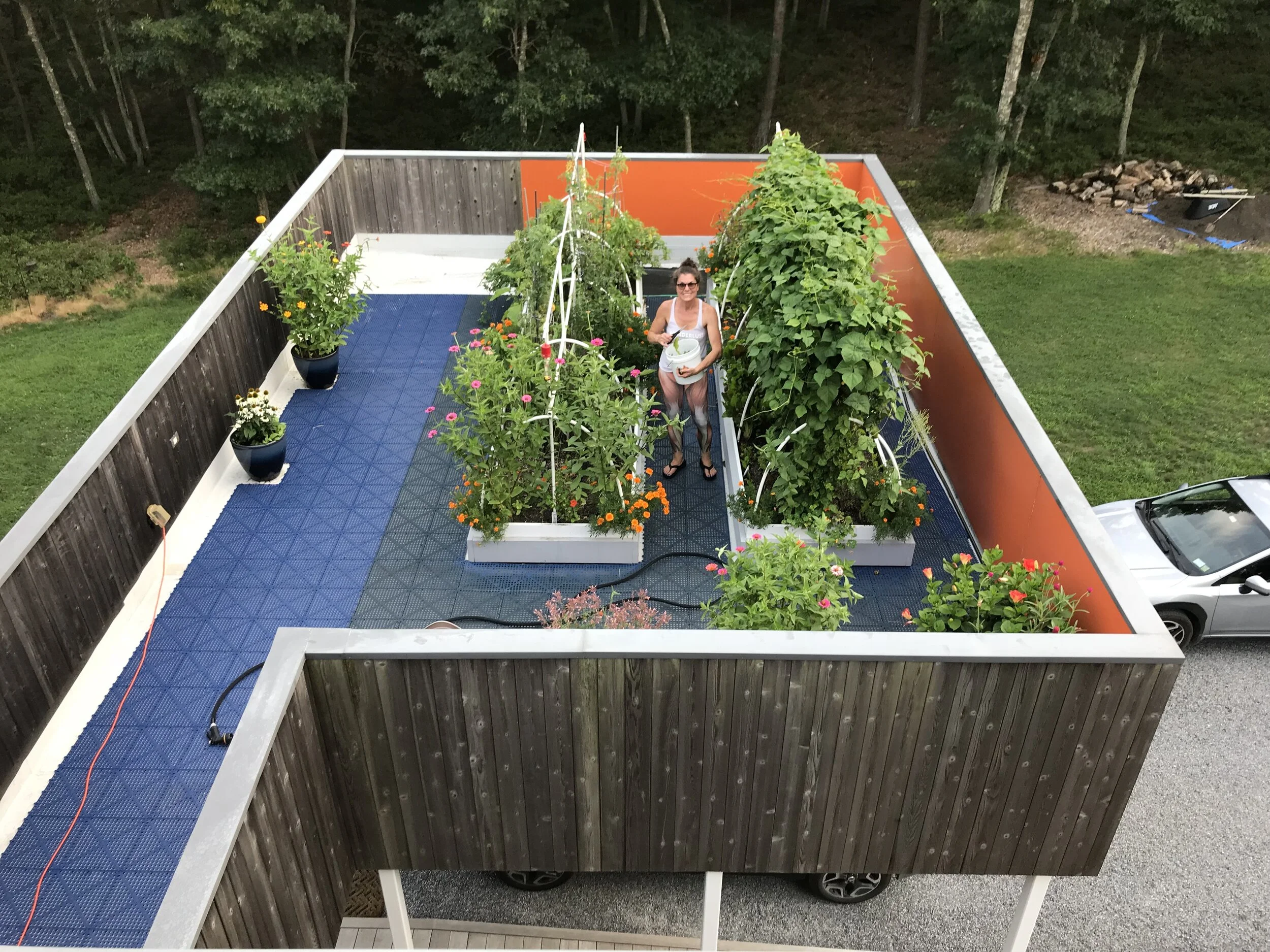Dock to Dish Spears the Future of Sea-to-Table
/As land-dwellers we have a 360-degree view of our agricultural landscape, an everyday convenience to absorb what is all around us: Amber Wave Farms is growing the season’s bounty, Browder’s Birds are grazing on pastures and in Montauk, N.Y. the fishermen are bringing fresh seafood to the docks. Nowadays, there are values that have gathered momentum in our agricultural landscape—“how was this tomato grown and who raised my chicken?”— is transferring over to the fishing industry. We know our farmers, but have you ventured beyond your local fishmonger and market and on to the docks to get to know your fisherman?
Well, this might be your chance. Dock to Dish, a CSF, community supported fishery, spears the future of sea-to-table by delivering fresh sustainably harvested seafood to your dish within 24 hours of being pulled from the ocean.
And fish is not the only thing they are hooking into, awareness and education are on their radar. Every week a newsletter goes out to inform members of their weekly catch describing: who, what, when, where and why the fish was caught, a suggested recipe to go along with the catch, a sustainable write-up about the species and strict methods used during and immediately after capture. They are also dedicated to hosting a variety of events for members and guests about why it is so important to support your local fishermen and to become stewards of our seas.
I was fortunate enough to attend their first event that celebrated the New York Times Best Selling book, Four Fish: The Future of the Last Wild Food at Canio’s Bookstore in Sag Harbor and to meet the author, lifelong fisherman and the book’s James Beard award-winning writer Paul Greenberg.
There are many challenges we face in sourcing local, wild and sustainable seafood. "Today we take more seafood out of the ocean every year than the equivalent of the human weight of China,” says Paul Greenberg. His scientific investigation and insight into how four wild fish: salmon, tuna, bass and cod frequently end up on dinner plates and whether they can be brought back from the brink of extinction was fascinating. “Our menus will be shaped in the coming years by aquaculture, we can expect to see limited options listed as the catch of the day. Local seafood, not too much and mostly bivalves is what we should be eating,” he says.
“It meant the world for us to have Paul Greenberg as our first guest speaker,” says Sean Barrett, co-founder of Dock to Dish. “Four Fish was a motivating force behind our launch. Now, having met Paul, we are able to see the relationship deepen and our understanding of his amazing work expand. As we continue learning the myriad of benefits in knowing our fisherman, we can now apply that philosophy to Paul and advocate that our members really get to know thy author.”
When I looked across the intimate Canios Bookstore there were many like-minded and familiar faces: Top-chef and avid fisherman Kerry Heffernan, Editor of Edible East End , Brian Halweil, Culinary Nutritionist and the host of Stirring the Pot on WPPB, Stefanie Sachs and New York State Field Outreach Representative of Fisheries for the Pew Charitable Trusts, Director of Operations for Shark Angels and scuba diver Jamie Pollack.
“The majority of fishermen see the fish from the surface when its caught and find the fun of the sport in the fight of the animal, I see the beauty of marine life in its natural habitat swimming around and interacting with it's environment,” says Jamie Pollack
Ralph Towlen, a spear gun fisherman and co-founder of Dock to Dish knows first hand what is beneath the hull and swimming in our oceans. Spear gun fishing is the most sustainable fishing method known to man. “We have zero bycatch, can harvest exact amounts, are able to analyze fish schools to pick the biggest and healthiest, and at times gender specific fish. If we see a female is carrying eggs we let the fish live and procreate,” says Sean Barrett. “Our restaurant clients are serving the freshest fish to over 700 people a week, combined with our CSF that is 1,000.” Expect to see a variety of local Long Island and New England fishes year round, including: black bass, blowfish, bluefish, haddock, hake, monkfish, pollock, porgy, skate, striped bass, summer flounder, redfish, swordfish, tilefish, tunas, wreckfish, mahi mahi, mullet, snappers, triggerfish and wahoo.
Another bonus to spear gun fishing is their conservation efforts to reverse the years of damage to the oceans ecosystem and marine life from lost drag nets and traps; these items are retrieved by Dock to Dish divers any chance they can get.
Paul Greenberg touched upon the Magnuson-Stevens Act or MSA. This was a law that was passed in 1976 and sets the standard for conservation, management and sustainable fishing in U.S. ocean waters. This act:
Kicked out foreign fishing fleets.
Established our Economic Zone which is about 4 million square miles of ocean 3-200 miles offshore and
established 8 regional councils to govern this vast territory. These councils are made up of representatives of coastal state governments, scientists and fishermen.
Set annual catch limits and accountability measures and
gave fish 10 years to rebuild.
The MSA was reauthorized in 2006 and is set to expire at the end of Sept 2013. “To weaken this world-class model now would be to ignore the innovation and sacrifice of those who built it over time, says Jamie Pollack.
When Congress reauthorizes the Magnuson-Stevens Act, it should consider amendments to:
Minimize the habitat damage and bycatch of indiscriminate fishing.
Ensure that adequate forage fish are in the water to feed the larger ecosystem.
Promote ecosystem-based fisheries management.
This law has been proven to strengthen the health of our seas and Dock to Dish is a great example of a CSF who is following suit.
Paul Greenberg signed personal copies of his book for fans by request. Some read: Thanks for your work to protect our oceans. Because of you, the oceans are a better place. It is nice to know that the grassroots movement has hit our seas.
A few hours before the event I had received my weekly Dock to Dish newsletter informing me of my family share—4lbs of Golden Tilefish. I thought, “wouldn’t it be apropo to share the catch and have a dinner for friends and family, including Sean Barrett, the fisherman himself.” Fisherman to Dish—it does not get more tangible than that.
While I was preparing our meal of: Arugula with Catapano goat cheese, beets and walnuts, grilled local sweet corn, North Fork heirloom cherry tomatoes, fresh mozzarella with homegrown basil, and pan seared Golden Tilefish with fresh herbs from Amber Waver Farms, friends and family were mingling.
I observed something truly remarkable, a discussion around the meal we were about to have, in particular—the Golden Tilefish. Even my father who is an avid fisherman of these local waters learned a thing or two. Golden Tilefish is a deep-water delicacy; 250 to 1,500 feet deep where cold bottom temperatures range from 49 to 58 degrees Fahrenheit. What made the catch most special was who caught the fish—The Nolan Family of Montauk, N.Y. and where it was caught— in the Hudson Canyon.
Finally dinner was served; everyone grabbed a dish and helped themselves to the feast. As we sat down and took our first bite of this Golden Tilefish that has a sweet and mild flavor similar to lobster and crab; thoughts surmounted. “This is the freshest fish I have ever eaten” “simply awesome” “incredibly tender” “I never knew fish could taste this good”. I would love to take all the credit and accolades for the taste of this truly spectacular fish; truth be told it is the fish that speaks for itself. There is very little you need to do to the fish when it is taken from the docks to your kitchen in a matter of hours— less is more flavor.
Over dinner we shared stories of past, present and upcoming future fishing trips; an evening I will always remember and cherish. I grew up fishing on the East End of Long Island, my fisherman and fishmonger is one in the same—my Pops. Similar to Paul Greenberg, my parents divorced when I was a child and his way to bond with my brother and me was to take us fishing; to this day all us kids still fish.
For Sean Barrett he saw his dream come to life; Dock to Dish created a dialogue around the dish, and before his eyes he saw first hand how he brought the sea-to-table.
Recipe for Pan Seared Golden Tilefish
ingredients
Sea Salt and Pepper
1 bunch of parsley and dill, chopped
4 lemons and juice of 1 lemon
1-2 tablespoons of olive oil
directions
Season fish with salt and pepper on both sides.
Heat 1 tablespoon of olive oil in a large non-stick frying pan.
Lay 2 fish filets skin side down and let sear until you see the fish turning white along the sides for about 5 minutes, or until the skin is crispy.
Once the flesh turns white about 1/2 way up the edges of the fish, turn it over and cook for an additional 2 minutes. Repeat with remaining filets.
Sprinkle with the parsley, dill and juice of one lemon over all of fish. Garnish with additional lemon wedges and finish with a sprinkle of sea salt.
That's it!






























